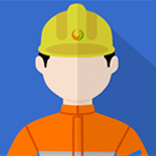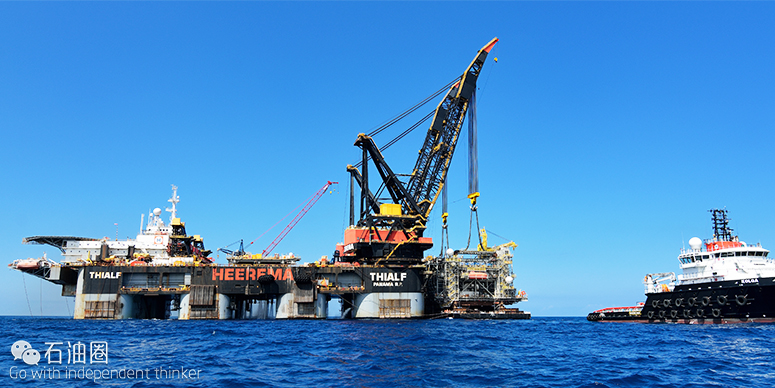The world’s first self-learning motion compensation system aims to plug the gap in the market for a versatile, portable and low cost solution that can be installed on new or existing marine and offshore applications. The company behind the innovation is offering to integrate the system within any existing or new winch or crane control system.
There is an increasing push in the marine and offshore sector to better utilise assets, whatever the weather conditions. Nowhere is this more critical than when lifting, lowering and accurately positioning or transferring loads, equipment and machinery either above the sea or beneath the surface.
Although these loads are generally large and heavy, they are relatively fragile and easily damaged, requiring delicate and precise handling and positioning. This is especially important when landing or interfacing loads from a moving vessel onto a fixed structure either in air or subsea. Handling such loads with any degree of precision or accuracy is difficult from a lifting device located on a floating vessel, as the motion of that vessel caused by wave excitation is directly transmitted to the load. Other activities, for example launching and recovering subsea vehicles (ROVs) that require docking of the vehicle into a tether management system (TMS) prior to recovery, are dependent upon stable position of the docking head.
As a result, such operations are significantly limited by weather conditions and much operational time is lost as a result. This leads to high cost of downtime, low asset utilisation and operational inefficiencies.
Active heave compensation
For this reason, active heave compensation is now the norm amongst most Tier 1 offshore contractors. It cancels the vessel vertical or heave motion in a single degree of freedom by introducing an equal and opposite vertical motion in the lift path. Such systems are referred to as ‘heave compensation’ and while many of the large operators and equipment manufacturers have access to the technology, many smaller ones do not.
X-Wave, an advanced motion compensation system, helps fill this technology gap.
Its designer, MJR Power & Automation, is patenting a series of innovations, including adaptive and predictive control strategies that provide self-learning capabilities for any active heave compensation and platform stabilisation system.
Quite often setting up and tuning an active heave compensation system can be time consuming. X-Wave’s self-learning routines bring automatic commissioning and self-optimisation to the application, thereby ensuring the application comes on line faster than any other system or solution. This massively reduces set up costs.
Reducing commissioning
This means the system automatically learns the process characteristics which dramatically reduces, and in some cases eliminates, commissioning. For instance it can learn the machine limitations in acceleration due to power restrictions or high inertia as well as learn fixed actuator delays, such as hydraulic valve or flow response lags caused by pumps and pipework. It can also predict sea motions including pitch, roll or heave.
The system adapts immediately should it experience load changes or suffer from aging, equipment failure, changes in friction, power supply characteristics or poor hydraulic valve response.
Optimising control systems
X-Wave automatically modifies and optimises control system behaviour in response to changing vessel dynamics. This means no vessel specific setup is required and the equipment can be transferred between vessels offering significant advantages to deployment of portable equipment.
As a standard solution, X-Wave can work with all actuators including rotary (winch), linear (cylinder) and hybrid (nodding donkey) as well as interfacing with hydraulic, pneumatic and electric power systems.
The system can control up to six degrees of freedom covering single axis ‘heave’ compensation of lifting devices such as cranes, winches and linear compensators through to multi-axis platform stabilisation covering pitch, roll, heave, surge, sway and yaw.
“Whilst active heave compensation and platform stabilisation systems are existing and well known, they are single application, equipment and/or vessel specific,” says Paul Cairns, Managing Director of MJR Power & Automation. “They are generally bespoke, designed specifically for a particular application or machine and therefore require a significant amount of re-engineering or adaptation for a different application. They also require a lengthy, complex and therefore very costly commissioning period.
“The X-Wave motion compensation system can be applied to all types of offshore motion compensation applications, whether building new equipment or retrofitting to existing equipment. X-Wave provides a number of novel features to provide a single ‘out of the box’ OEM solution to all marine and offshore motion compensation applications.”
Unlike other motion compensation systems for marine and offshore use, X-Wave can be deployed with high availability, redundant architecture and can be configured to control more than one machine.
Further development
The advanced motion compensation system is designed by MJR Power & Automation and features a range of automation, electrical and control equipment from ABB. Further development work is currently underway with ABB to more closely integrate the unique benefits of the system within the ABB ACS880 advanced drive platform to provide a cost effective tightly integrated electric drive AHC solution.
ABB (www.abb.com) is a leader in power and automation technologies that enable utility, industry, and transport and infrastructure customers to improve their performance while lowering environmental impact. The ABB Group of companies operates in roughly 100 countries and employs about 140 000 people.


 石油圈
石油圈
